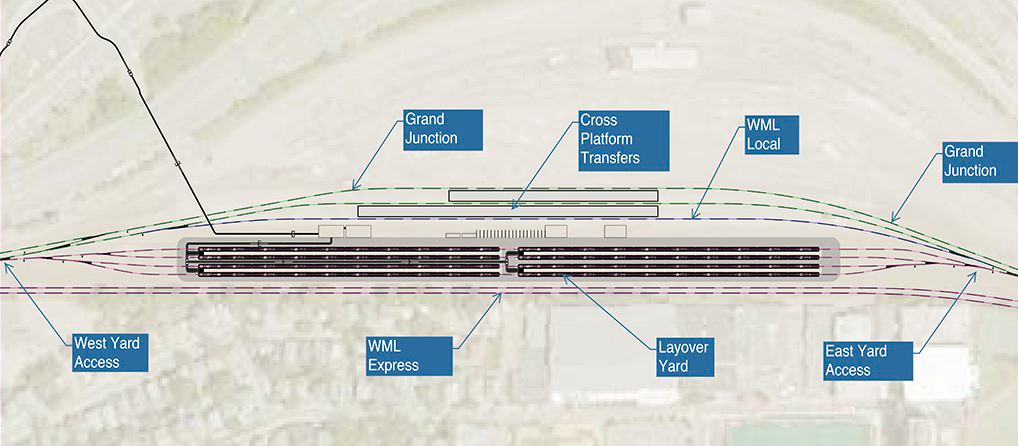Not many, because so long as Malvern St. (with its
virtually unusable intersection at Packards Corner) is the only spanning street to the south on the grid, you pretty much can't mount anything except a super-inconvenient loop-a-thon off Cambridge St. like the 64. BU cockblocking a Babcock connection absolutely
cripples the crosstown connectivity. I'm not even sure how that LMA jitney in their plans is going to function at all given the fact that it has to bang a left at Brighton Ave. from that godawful intersection. And if the Cambridge St. loop-a-thon is so inconvenient and schedule-destroying that it's inappropriate for a frequent and load-bearing route like the T66, you're not going to get much in the way of high-frequency linkage from anywhere. The multimodal connections at this station are almost entirely dependent on a dedicated Urban Ring ROW coming through off the Grand Junction. Yes...fine!...do leave a future provision (
not an overbuild, but a future provision) for that. But the hope-and-a-prayer GJ Purple Line dinky extra RR platform isn't that provision, either.
Crappy hack, but can't you just access the bridge from Babcock anyway via Ashford/Gardner for services that link to the east/south east?
-----------
it’s always struck me that the portion of Brighton Ave that the 66 uses isn’t exactly the cradle of civilization. You can go to Blanchards or TITS, not much really. If you’re trying to make a trip to BU or points East from there it’s faster to walk than wait 20 minutes for a 57 bus connection. If we had an A train of course this would be easier but alas.
General 64/66/Allston-Brighton commentary to this + some other posts:
- The 2 block stretch of Harvard Ave from Comm-Brighton Ave is
extremely busy (and continues to a degree in both directions), and has probably the single highest density of late night food operations in this city. It's one of the only places in the city where virtually every night of the week, even without any sort of event, you can go by at 11PM and there's still
tons of people out and about and it actually looks like a lively city.
- Obviously - there are a number of other such things, bars, Brighton Music Hall, etc in the rest of the path it travels through Union Sq.
- Rerouting the 66 away from basically traveling the spine of the center of civilization for the area, would seem like an absolutely massive mistake.
- A secondary factor is that the mediocre 64/86 frequencies make it pretty normal for people to just walk a longer than typical distance from the Boston Landing area to Union Sq to pick up the 66/57, especially when we're talking nights/weekends. Maybe if you're improving the 64/86 significantly the usage pattern changes, but as of now, pulling the 66 out of Union Sq would serve to make that much harder. If I leave a Roadrunner show at night and want to get back to Cambridge, I probably just walk to Union Sq for a 66 given how thin the 64/86 schedules are.
- I'm not sure I'm
that negative on the prospect of the 64's timekeeping for this proposal. While making a left out of Malvern to go east/south is insane, the turns into/from Malvern for something coming from the West aren't too bad from what I've observed. I'm not saying I think it makes much sense to route the 64 there, just that I don't know that it'll kill the route/schedule that bad, especially with the bus lanes now - and if they were better enforced.



